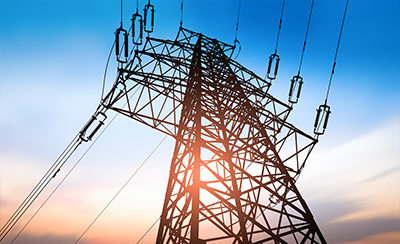< Back to blog
2021-22 Transmission Plan approved by ISO Board
By Jeff Billinton, Director of Transmission Infrastructure Planning
March 24, 2022
 Each year, the California ISO conducts its transmission planning process to identify potential system limitations and areas that need reinforcements over a 10-year horizon. The annual planning process, set out in our federal tariff, provides for the approval of new transmission infrastructure and triggers permitting and construction activities.
Each year, the California ISO conducts its transmission planning process to identify potential system limitations and areas that need reinforcements over a 10-year horizon. The annual planning process, set out in our federal tariff, provides for the approval of new transmission infrastructure and triggers permitting and construction activities.
This year’s
2021-2022 Transmission Plan, approved by the ISO Board of Governors at its March 17 meeting, identified 23 projects at an estimated cost of $2.9 billion. The work includes system expansions, upgrades, and reinforcements needed for reliability and to meet the state’s clean energy targets efficiently and effectively for the next decade.
Those projects represent a marked escalation in the need for new transmission because as the state has been accelerating procurement of additional clean energy to help meet its goal of having a carbon-free electrical grid by 2045, more transmission improvements have also been necessary. The increase is also being driven by advances occurring in electrifying the transportation, industrial, and residential sectors.
The ISO recognizes and appreciates concerns regarding the potential ratepayer impacts of capital projects identified and approved in the ISO’s planning process. As the ISO did in this planning cycle, it will continue to explore with stakeholders cost-effective solutions to meeting long-term needs in future planning cycles.
Last year’s 2020-2021 transmission plan was based on a projected need to add about 1,000 megawatts (MW) of new resources per year over the 10-year planning horizon, and next year’s plan is expected to assume a requirement of more than 4,000 MW of new resources per year. This year’s 2021-2022 transmission plan is based on an intermediate level of approximately 2,700 MW of new resources per year, demonstrating a meaningful step forward in meeting the emerging challenges facing the grid while recognizing the need for more transmission.
Our latest transmission plan also outlines the need for a widening and expanding set of diverse resources to meet clean-energy goals, including geothermal, new out-of-state renewables, and future offshore wind generation.
These assumptions and findings are not identified in a vacuum. The planning cycle runs from January each year to March of the subsequent year. The plan is developed through a comprehensive and intensive stakeholder process that includes input from out-of-state developers and is closely coordinated with the California Public Utilities Commission (CPUC) and the California Energy Commission (CEC). The plan relies heavily on the agencies’ input and data to align with state policies.
Our Transmission Planning Process views projects from the perspective of reliability, good public policy, and economic benefits to consumers.
The approved plan will now guide collaborative activities for the implementation of the newly approved transmission upgrades, including initiating the competitive solicitation process for four of the projects. It also sets in motion contractual agreements for the improvements, and cost recovery for projects through ISO transmission rates.
For the first time ever, the ISO also produced a
20-Year Transmission Outlook in addition to its yearly plan. While the 10-year plan is spelled out in our tariff and identifies specific projects for construction, the longer outlook is designed to provide a framework for the system’s future transmission needs so we can begin thinking more critically about longer-term needs and make decisions today that are consistent with those projected requirements.
The two documents are intended to help identify the short, intermediate, and long-term milestones of the clean energy transition, allowing smart and thoughtful coordination while creating the most efficient and durable transmission infrastructure to serve California for years to come.
< Back to blog